Beef short ribs are a very popular cut to prepare sous-vide, because they are so flavorful. How do you like beef short ribs? Braised and unctuous like in the photo above? Then cook them sous-vide for 24 hours at 74C/165F. Or do you prefer them juicy and tender with the texture of steak or prime rib as in the photo below? Then go for 48 hours at 57C/135F (see this post how I determined that is the best time and temperature to get steak-like beef short ribs sous-vide). Before sous-vide became popular, only the braised style was known because you can also cook them low and slow like that in the oven or in a closed BBQ grill. Now with sous-vide you also have the possibility to serve them with steak texture, but with much more beefy flavor than a regular steak.
Both styles are good, so it is a matter of personal preference which style you choose to prepare. The ‘braised’ short ribs are well done, fall apart tender and unctuous because all of the connective tissue (collagen) has dissolved into gelatin. Most of the fat has rendered from the meat, but thanks to the gelatin you don’t miss it at all. The ‘steak-like’ short ribs are medium rare, very tender and juicy, with a very beefy flavor. The fat has hardly rendered and some of the connective tissue (especially the ‘skin’ around the bone) is still so tough that you have to trim it away when eating.
Both preparations started out as English cut short ribs. Beef short ribs are cut from what is known the ‘short plate’ and are the lower part of ribs 5 through 8 (counting from 1 for the rib nearest to the head). ‘English cut’ just means that you cut in between the bones. Watch this video or show it to your butcher if needed, because in many countries (like the Netherlands) short ribs are not a commonly available cut of beef.
Season the short ribs with salt and freshly ground black pepper on all sides…
…and vacuum seal them individually.
If you are going to cook them at 57C/135F, then they need to be blanched or scalded in boiling water for about 30 seconds to prevent the development of an unpleasant smell.
This step will kill any lactobacillus on the surface. When cooking the short ribs at 74C/165F you can skip this step, because the lactobacillus won’t survive at that temperature.
This is what the short ribs will look like after 48 hours at 57F/135F.
As you can see the fat has hardly rendered and the meat has released quite a bit of beef juices into the bag. The proteins in these juices have only been cooked to 57C/135F and so they will coagulate (break up) if you try to reduce them into a sauce without adding a thickener like corn starch or arrowroot.
After 24 hours at 74C/165F they look quite different.
A lot of fat has been rendered from the meat. It is a good idea to separate the liquid from the bag into meat juices and fat. The fat will float on the top, so if you pour the liquid into a narrow container it is quite easy to remove it with a spoon. As these meat juices have been cooked to 74C/165F, they can be used to make a reduction sauce without coagulation problems.
You can sear the ribs in vegetable oil, but if you cooked them at 74C/165F it is much better to use the rendered beef fat from the bag to enhance the beefy flavor. Do only use about 4 tablespoons of the beef fat and reserve the rest for another use (the fat is awesome for pasta with roasted cauliflower).
You could brown short ribs cooked at 57C/135F with the bone in…
…but when cooked at 74C/165F the bone will fall out (remember they are ‘fall off the bone’ tender!).
After browning, wrap the short ribs in aluminum foil while you finish the sauce. Deglaze the pan with red wine.
If you cooked the short ribs at 57C/135F, add a teaspoon of cornstarch or arrow root to the reserved juices, and whisk well to incorporate. (To prevent lumps, you could also mix the cornstarch with cold water first and then add it to the juices.)
Add the juices to the pan with the wine.
And reduce over medium heat until the sauce has thickened. Taste and adjust the seasoning with salt and freshly ground black pepper. (Depending on the wine you used, you may also have to add a tiny pinch of sugar.)
Serve the short ribs with the pan reduction sauce and mashed potatoes, celeriac puree, or parsnip puree.
Wine pairing
It goes without saying this should be paired with a hefty full-bodied red wine. However, the wine style that will work best depends on the cooking temperature of the short ribs. For 57C/135F a more astringent wine that is younger or from a cooler climate would be the best choice, think Bordeaux such as Saint-Emilion or Pomerol, or Barolo, or Cabernet from California or Chile. But for short ribs cooked at 74C/165F you will need a more velvety wine that has been aged or from a warmer climate like Chateauneuf-du-Pape, Cannonau di Sardegna, Primitivo from Puglia, Australian Shiraz, or Californian Zinfandel.
Flashback
This fig and almond tart is simply delicious.
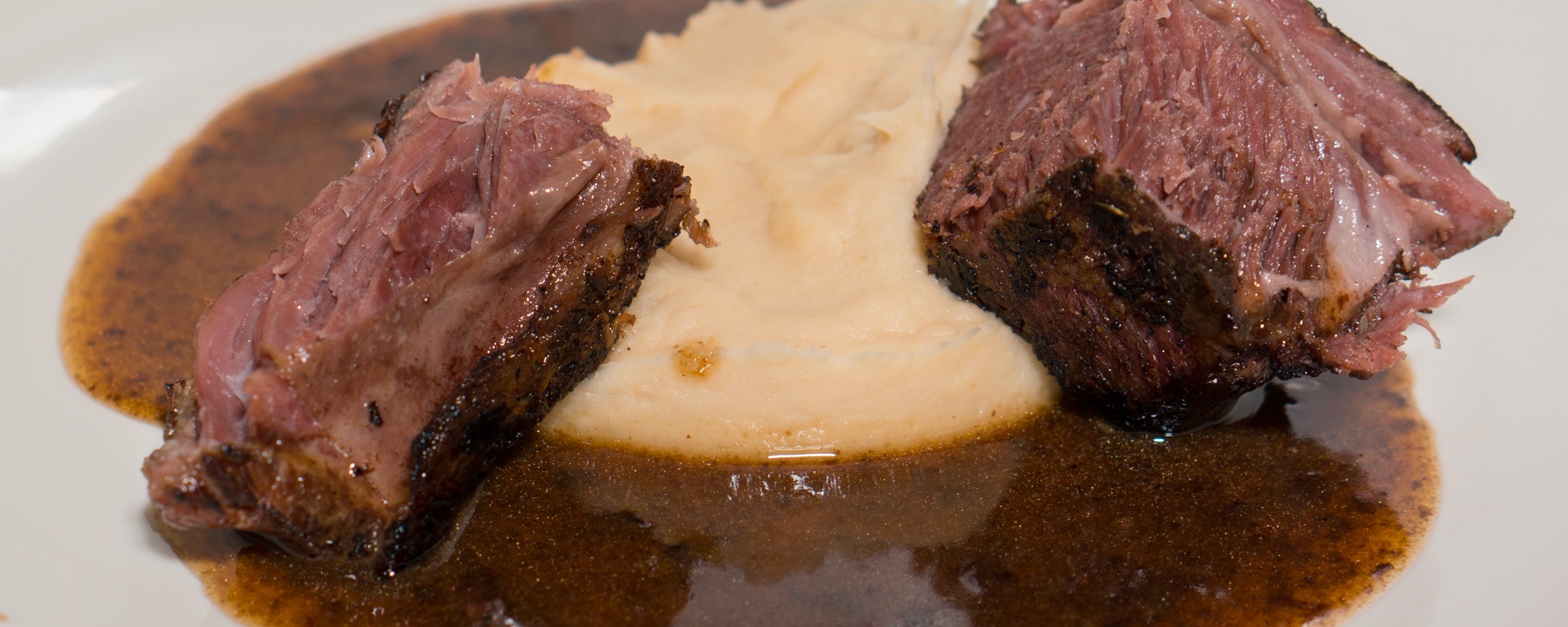
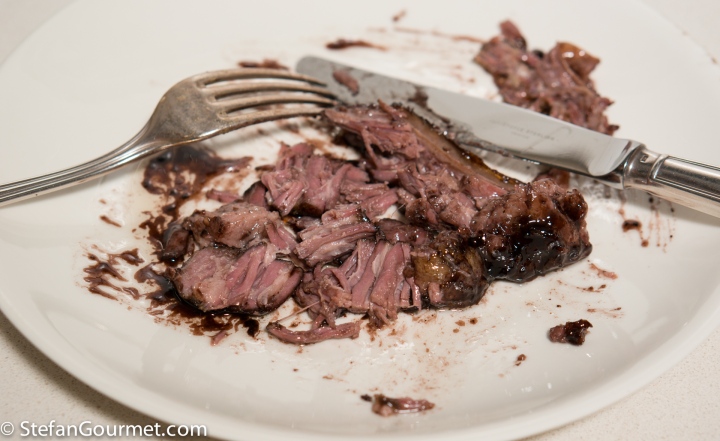

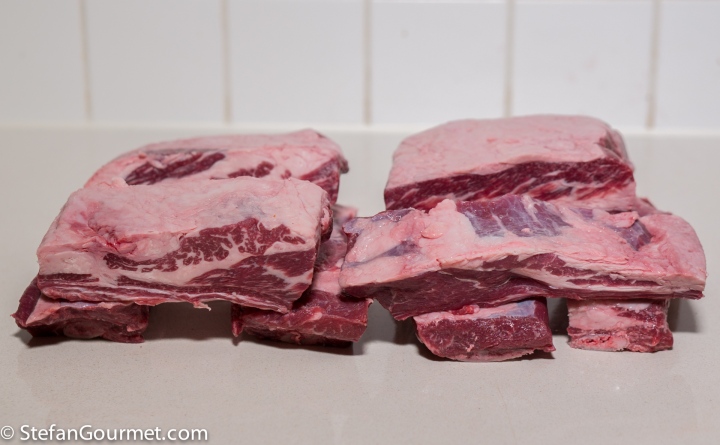
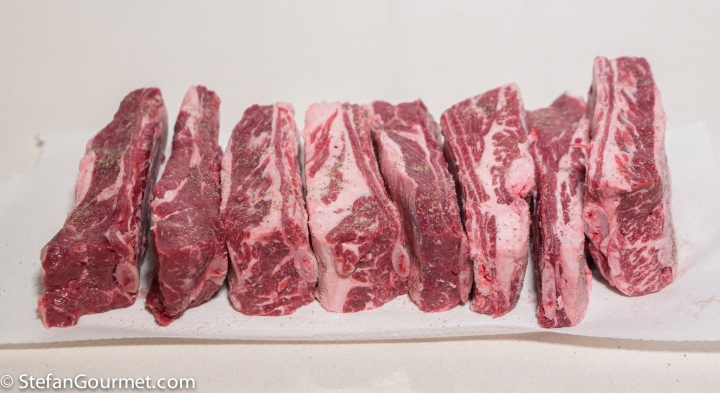


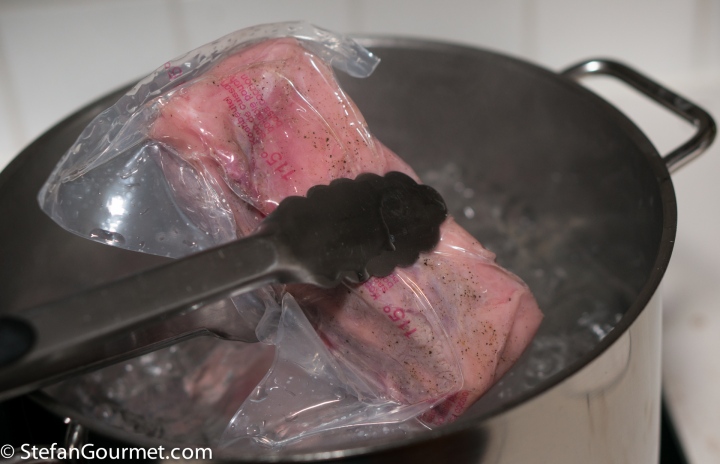
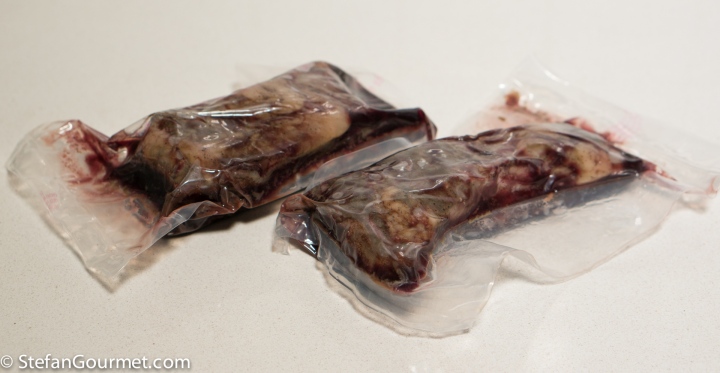

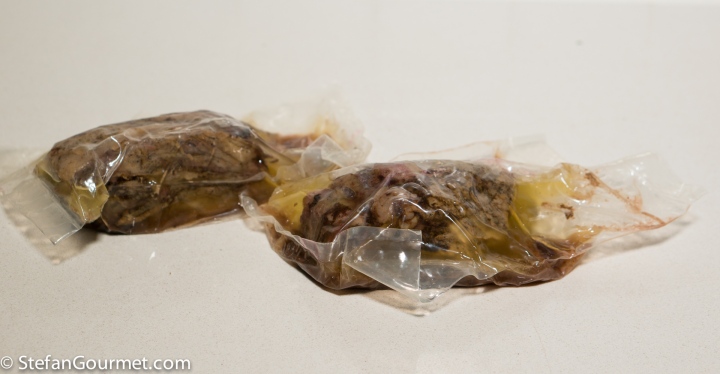
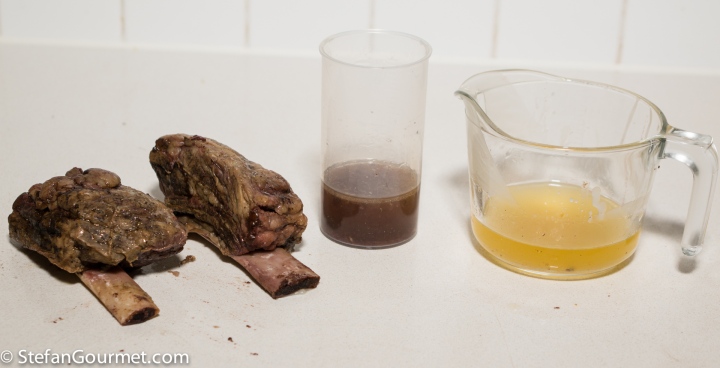

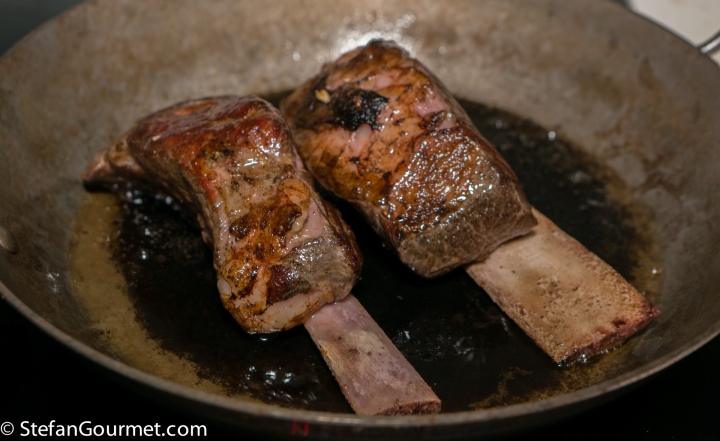
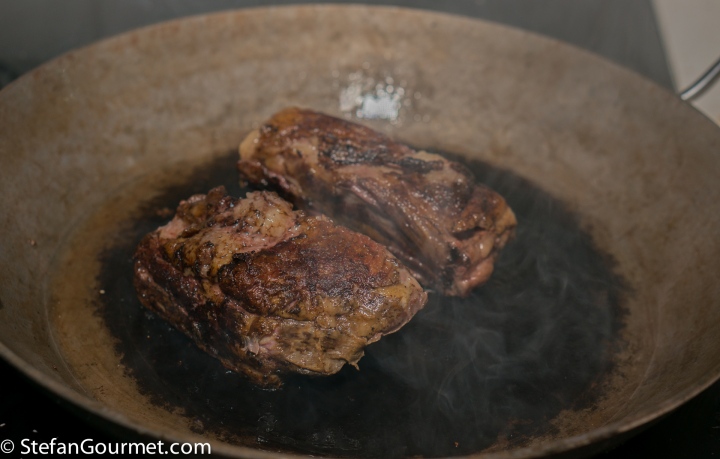

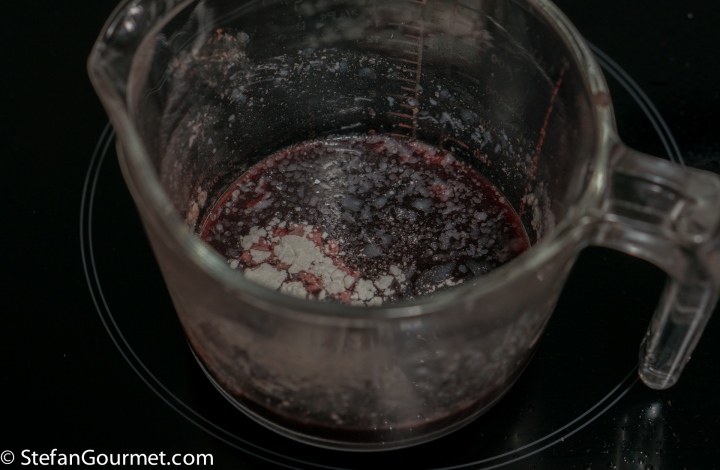
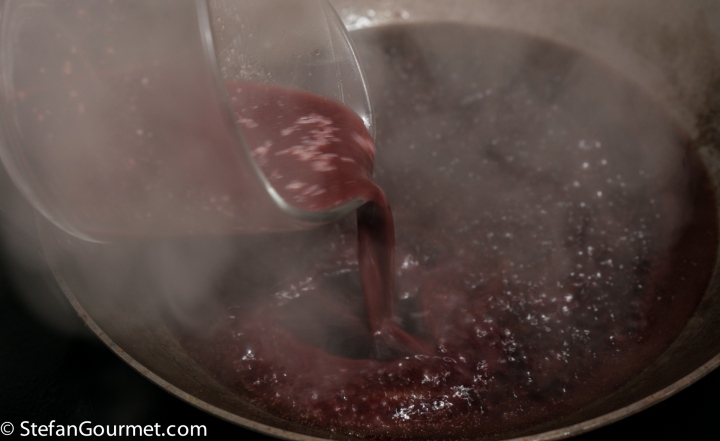
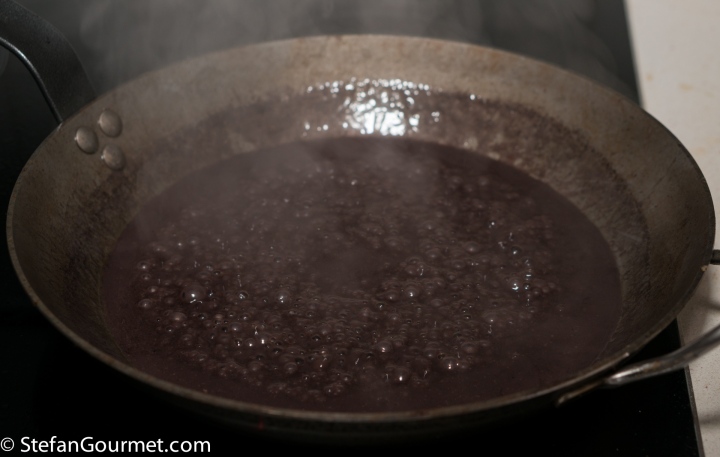



Fascinating. It’s nice to have the sous vide option. But I think for me this is one meat that I will continue to braise. There are enough steaks around to enjoy sous vide, like hanger and flank, and i enjoy the flavor options for braising short ribs.
LikeLiked by 2 people
I just bought an Instant Pot, and reading the instruction, I think it can cook like sou vide, more or less … low temperature anyway. I’ll see. Grazie intanto
LikeLiked by 1 person
It has “keep warm” temperature settings that perhaps can be used for this (56 and 74 degrees). The “slow cook” temperatures are 88 degrees and higher, and too high to get this type of result.
LikeLike
I’ve cooked them both ways and both are equally delicious!
LikeLiked by 1 person
Love how tender this steak looks, and I also always add wine to the same pan as the one used for cooking meat to prepare a sauce 🙂
LikeLiked by 1 person
I’ll go for the very soft version and give them a glaze finishing over the BBQ.
LikeLiked by 1 person